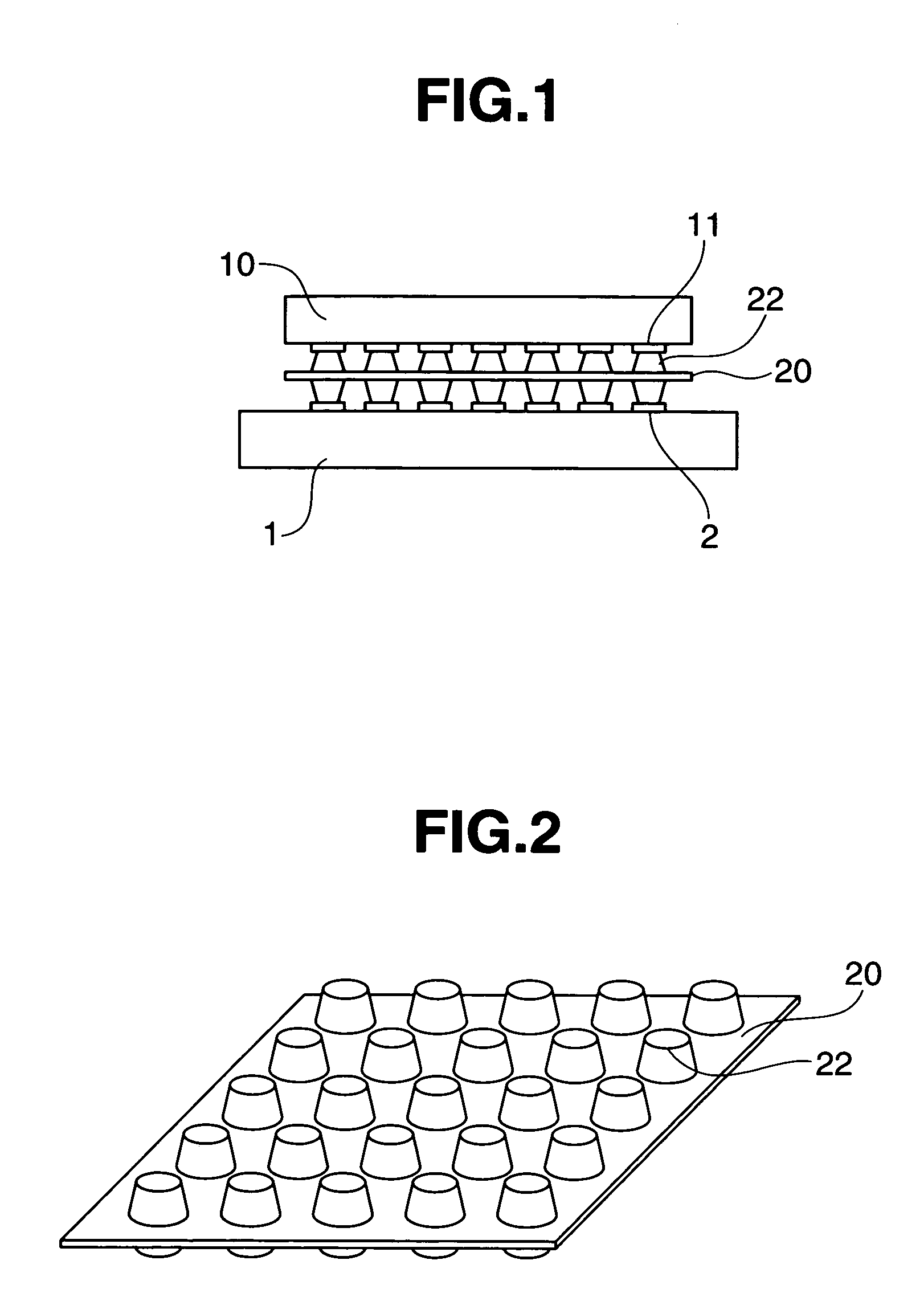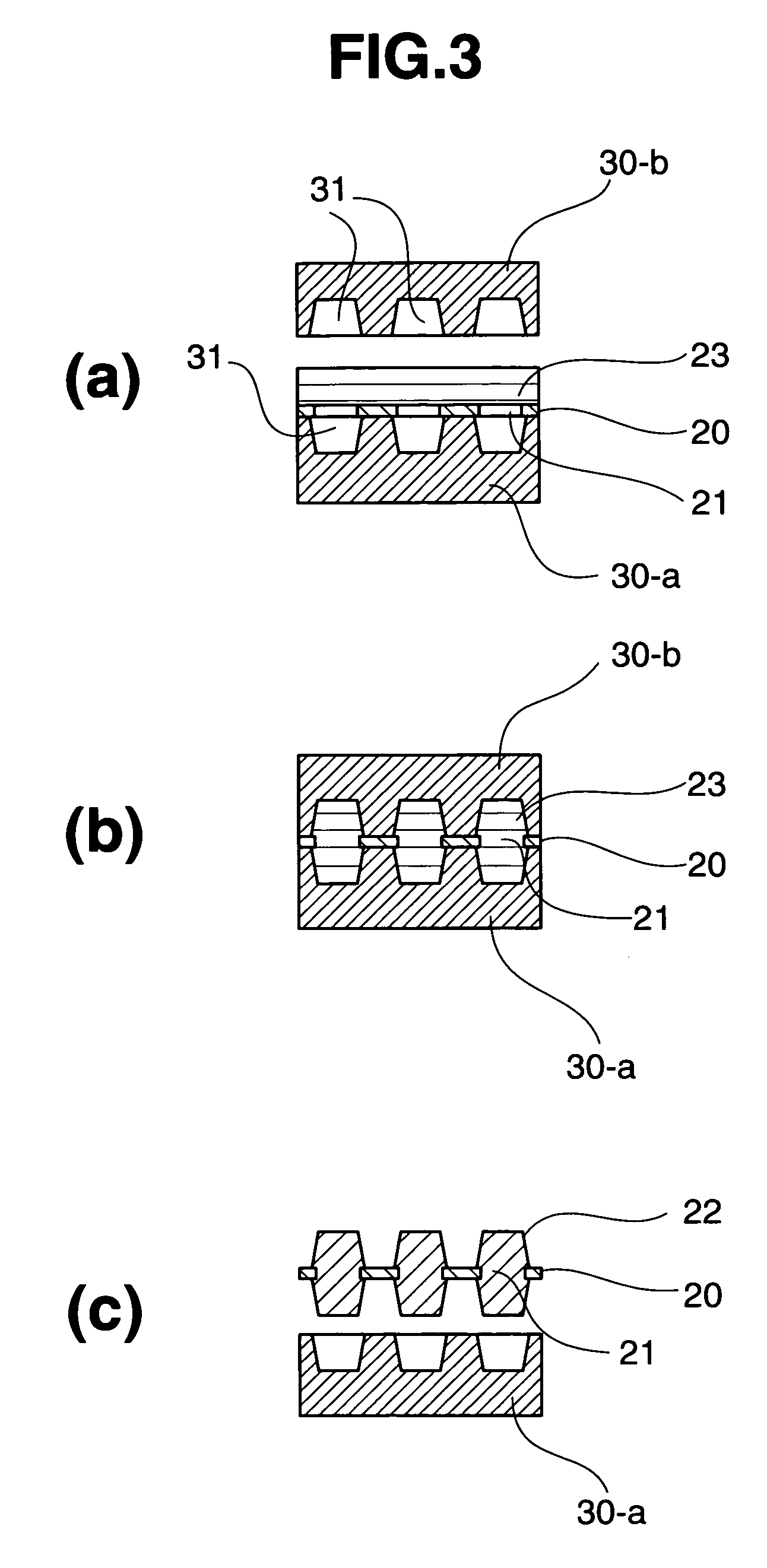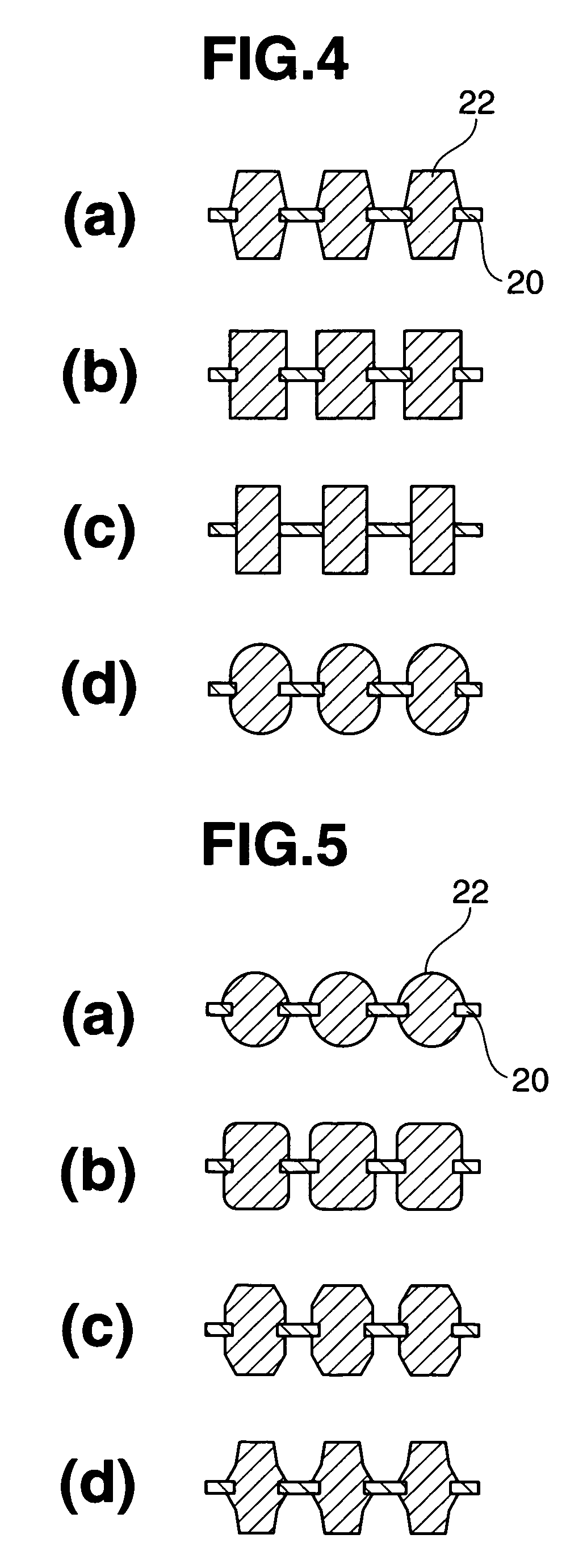Conductive contact elements and electric connectors
a technology of contact elements and electric connectors, applied in the direction of connection contact member materials, non-metal conductors, coupling device connections, etc., can solve the problems of inconsistency of resistance, inability to connect simultaneously using solder, and inability to achieve high-speed signal transmission. to prevent the effect of conduction resistance increasing
- Summary
- Abstract
- Description
- Claims
- Application Information
AI Technical Summary
Benefits of technology
Problems solved by technology
Method used
Image
Examples
example 1
[0058]A conductive silicone rubber composition was prepared by blending 100 parts of a methylvinylpolysiloxane consisting of 99.85 mol % of dimethylsiloxane units and 0.15 mol % of methylvinylsiloxane units, end-capped with a dimethylvinylsilyl group, and having an average degree of polymerization of about 8,000, 450 parts of granular silver powder A (average particle size 7.3 μm, tap density 1.4 g / cm3, specific surface area 0.6 m2 / g, Silbest F20 by Tokuriki Chemical Research Co., Ltd.), and 0.5 part per 100 parts of the mixture of the methylvinylpolysiloxane and the silver powder A of dicumyl peroxide.
[0059]Next, a square insulating substrate of polyimide (100 μm thick) was perpendicularly drilled at a pitch of 1 mm to form 1156 (34×34) through-holes having a diameter of 0.5 mm. As shown in FIG. 3, the conductive silicone rubber composition prepared above was placed on the substrate so as to cover a plurality of through-holes. The insulating substrate at its front and back sides wa...
example 2
[0062]Conductive contact elements and an electric connector were prepared as in Example 1 except that a conductive silicone rubber composition was prepared by blending 100 parts of the methylvinylpolysiloxane, 500 parts of granular silver powder A (average particle size 7.3 μm, tap density 1.4 g / cm3, specific surface area 0.6 m2 / g, Silbest F20 by Tokuriki Chemical Research Co., Ltd.), and 0.5 part per 100 parts of the mixture of the methylvinylpolysiloxane and the silver powder A of dicumyl peroxide.
[0063]A similar test to Example 1 showed an average value of 10 mΩ and a maximum value of 15 mΩ, indicating a low resistance with a minimized variation. When compression operation was repeated 100 times, the resistance was found to have changed only 1.1 times the initial value.
PUM
| Property | Measurement | Unit |
|---|---|---|
| specific surface area | aaaaa | aaaaa |
| volume resistivity | aaaaa | aaaaa |
| mol % | aaaaa | aaaaa |
Abstract
Description
Claims
Application Information
 Login to View More
Login to View More - R&D
- Intellectual Property
- Life Sciences
- Materials
- Tech Scout
- Unparalleled Data Quality
- Higher Quality Content
- 60% Fewer Hallucinations
Browse by: Latest US Patents, China's latest patents, Technical Efficacy Thesaurus, Application Domain, Technology Topic, Popular Technical Reports.
© 2025 PatSnap. All rights reserved.Legal|Privacy policy|Modern Slavery Act Transparency Statement|Sitemap|About US| Contact US: help@patsnap.com



